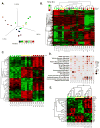Romidepsin in peripheral and cutaneous T-cell lymphoma: mechanistic implications from clinical and correlative data
- PMID: 25891346
- PMCID: PMC4675455
- DOI: 10.1111/bjh.13400
Romidepsin in peripheral and cutaneous T-cell lymphoma: mechanistic implications from clinical and correlative data
Abstract
Romidepsin is an epigenetic agent approved for the treatment of patients with cutaneous or peripheral T-cell lymphoma (CTCL and PTCL). Here we report data in all patients treated on the National Cancer Institute 1312 trial, demonstrating long-term disease control and the ability to retreat patients relapsing off-therapy. In all, 84 patients with CTCL and 47 with PTCL were enrolled. Responses occurred early, were clinically meaningful and of very long duration in some cases. Notably, patients with PTCL receiving romidepsin as third-line therapy or later had a comparable response rate (32%) of similar duration as the total population (38%). Eight patients had treatment breaks of 3.5 months to 10 years; in four of six patients, re-initiation of treatment led to clear benefit. Safety data show slightly greater haematological and constitutional toxicity in PTCL. cDNA microarray studies show unique individual gene expression profiles, minimal overlap between patients, and both induction and repression of gene expression that reversed within 24 h. These data argue against cell death occurring as a result of an epigenetics-mediated gene induction programme. Together this work supports the safety and activity of romidepsin in T-cell lymphoma, but suggests a complex mechanism of action.
Trial registration: ClinicalTrials.gov NCT00007345.
Keywords: T-cell lymphoma; chromatin; epigenetic therapy; histone deacetylase inhibitor; romidepsin.
© 2015 John Wiley & Sons Ltd.
Conflict of interest statement
Drs. Bates, Piekarz, Prince, Kirschbaum, Allen, Zain, Geskin, Joske, Popplewell and Cowen received funding from a CRADA between the NIH and Celgene Corporation. Drs. Nichols, Zain and Kennedy were employed by Glouchester Pharmaceuticals/Celgene Corporation. The other authors declare no conflict of interest.
Figures





Similar articles
-
Romidepsin treatment for relapsed or refractory peripheral and cutaneous T-cell lymphoma: Real-life data from a national multicenter observational study.Hematol Oncol. 2019 Dec;37(5):569-577. doi: 10.1002/hon.2691. Epub 2019 Nov 25. Hematol Oncol. 2019. PMID: 31674027
-
Romidepsin: in the treatment of T-cell lymphoma.Drugs. 2011 Jul 30;71(11):1469-80. doi: 10.2165/11207170-000000000-00000. Drugs. 2011. PMID: 21812508
-
Phase II multi-institutional trial of the histone deacetylase inhibitor romidepsin as monotherapy for patients with cutaneous T-cell lymphoma.J Clin Oncol. 2009 Nov 10;27(32):5410-7. doi: 10.1200/JCO.2008.21.6150. Epub 2009 Oct 13. J Clin Oncol. 2009. PMID: 19826128 Free PMC article. Clinical Trial.
-
Emerging role of the histone deacetylase inhibitor romidepsin in hematologic malignancies.Expert Opin Pharmacother. 2010 Dec;11(18):3073-84. doi: 10.1517/14656566.2010.534779. Expert Opin Pharmacother. 2010. PMID: 21080855 Review.
-
The discovery and development of romidepsin for the treatment of T-cell lymphoma.Expert Opin Drug Discov. 2017 Aug;12(8):859-873. doi: 10.1080/17460441.2017.1341487. Epub 2017 Jun 22. Expert Opin Drug Discov. 2017. PMID: 28641053 Review.
Cited by
-
Jak-STAT Inhibition Mediates Romidepsin and Mechlorethamine Synergism in Cutaneous T-Cell Lymphoma.J Invest Dermatol. 2021 Dec;141(12):2908-2920.e7. doi: 10.1016/j.jid.2021.04.023. Epub 2021 Jun 3. J Invest Dermatol. 2021. PMID: 34089720 Free PMC article.
-
Romidepsin enhances the cytotoxicity of fludarabine, clofarabine and busulfan combination in malignant T-cells.Leuk Res. 2016 Aug;47:100-8. doi: 10.1016/j.leukres.2016.05.019. Epub 2016 May 27. Leuk Res. 2016. PMID: 27294334 Free PMC article.
-
Xenograft and cell culture models of Sézary syndrome reveal cell of origin diversity and subclonal heterogeneity.Leukemia. 2021 Jun;35(6):1696-1709. doi: 10.1038/s41375-020-01068-2. Epub 2020 Oct 26. Leukemia. 2021. PMID: 33106625 Free PMC article.
-
Romidepsin targets multiple survival signaling pathways in malignant T cells.Blood Cancer J. 2015 Oct 16;5(10):e357. doi: 10.1038/bcj.2015.83. Blood Cancer J. 2015. PMID: 26473529 Free PMC article.
-
R-Loop-Mediated ssDNA Breaks Accumulate Following Short-Term Exposure to the HDAC Inhibitor Romidepsin.Mol Cancer Res. 2021 Aug;19(8):1361-1374. doi: 10.1158/1541-7786.MCR-20-0833. Epub 2021 May 28. Mol Cancer Res. 2021. PMID: 34050002 Free PMC article.
References
-
- Bates S, Zhan Z, Steadman K, Obrzut T, Luchenko V, Frye R, Robey R, Turner M, Gardner E, Figg W, Steinberg S, Ling A, Fojo T, To K, Piekarz R. Laboratory correlates for a phase II trial of romidepsin in cutaneous and peripheral T-cell lymphoma. British Journal of Haematology. 2010;148:256–267. - PMC - PubMed
-
- Bhalla S, Balasubramanian S, David K, Sirisawad M, Buggy J, Mauro L, Prachand S, Miller R, Gordon LI, Evens AM. PCI-24781 induces caspase and reactive oxygen species-dependent apoptosis through NF-kappaB mechanisms and is synergistic with bortezomib in lymphoma cells. Clinical Cancer Research. 2009;15:3354–3365. - PMC - PubMed
-
- Cabell C, Bates S, Piekarz R, Whittaker S, Kim YH, Currie M, Godfrey CJ, Schoonmaker C, Nichols J, Nix D, Burris HA. Systematic Assessment of Potential Cardiac Effects of the Novel Histone Deacetylase (HDAC) Inhibitor Romidepsin. Blood (American Society of Hematology Annual Meeting Abstracts) 2009;114:3709.
Publication types
MeSH terms
Substances
Associated data
Grants and funding
LinkOut - more resources
Full Text Sources
Other Literature Sources
Medical
Molecular Biology Databases

